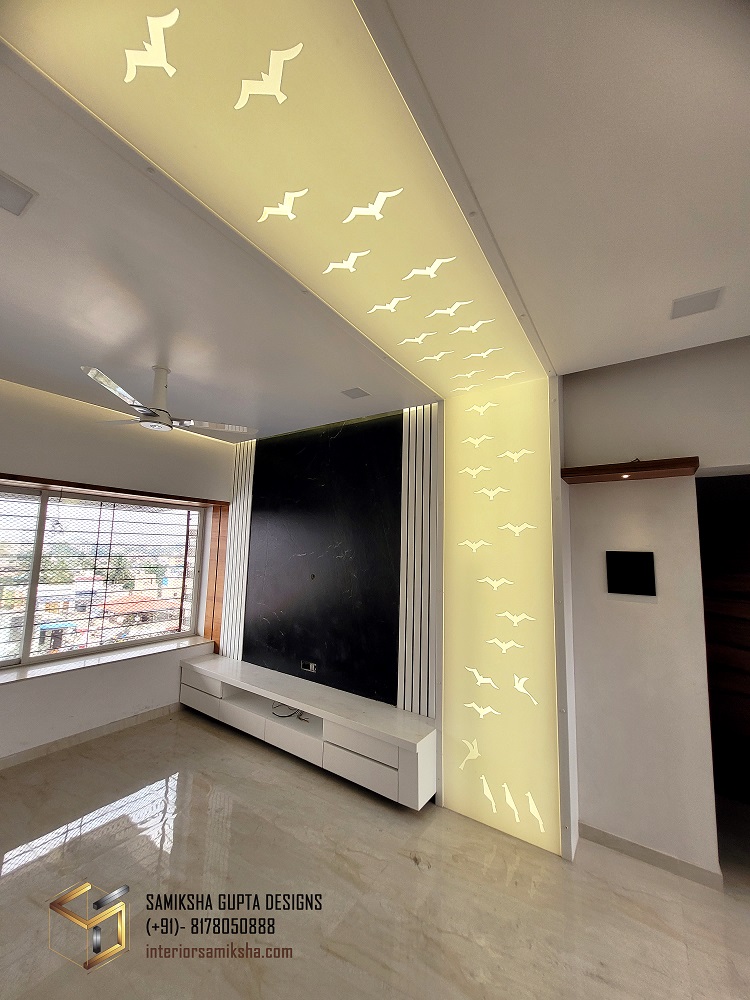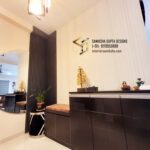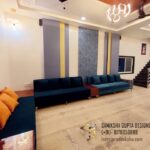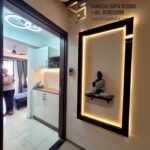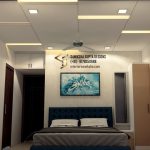In the world of interior design, the quest for innovative materials that blend aesthetic appeal, functionality, and durability is a constant endeavour. Corian in interiors is a material that has gained significant popularity over the years.
Corian was developed by DuPont in the 1960s. It’s a versatile solid surface that has revolutionized interior spaces. It offers an array of benefits and design possibilities.
I remember when I was working in Ahmedabad for my internship a few years back and Corian had just started gaining popularity, it was popular by the name of “DuPont” just like every 2-minute-noodle is popular by the name “Maggi”.
Then I moved to Delhi for the job and I started hearing the word “Corian” and it was much later I realized that those are the same thing.
From kitchen countertops to bathroom vanities, and even wall cladding, Corian has become a go-to choice for designers seeking to create visually stunning and practical spaces.
Unmatched Design Flexibility
One of the most remarkable aspects of Corian is its unmatched design flexibility. Unlike natural stones or other solid surface materials, Corian can be fabricated into virtually any shape, allowing designers to bring their most creative visions to life.
With Corian, the possibilities are endless. From sleek, seamless countertops with integrated sinks to curved and sculptural elements, this material opens up a world of design opportunities.
Whether you desire clean lines or organic forms, Corian can be thermoformed, carved, inlaid, and even backlit, providing endless customization options for both residential and commercial interiors.
Seamless Integration
Another significant advantage of Corian is its ability to create seamless surfaces. Unlike traditional materials, which require visible joints or grout lines, Corian can be seamlessly fused, giving a smooth and continuous appearance.
This particular feature is what fascinated me the most.
This feature not only enhances the aesthetics of a space but also improves hygiene by eliminating crevices where dirt and bacteria can accumulate.
Corian’s seamless integration allows easy maintenance and cleaning, making it an ideal choice for high-traffic areas such as kitchens and bathrooms.
I have used Corian in TV units, office tables and wall panelling with back-lit effects. My first choice for seamless and joint-free surfaces is Corian.
Vibrant Colours and Patterns
In case you’re wondering, Corian doesn’t come in just White. It offers an extensive range of colours and patterns to suit various design preferences. Corian offers a wide range of options, including solid hues, intricate marbles, granites, and even translucent designs, allowing it to mimic natural stone while delivering superior performance.
With this variety of choices, designers can easily find the perfect Corian shade or pattern to complement any interior style, from minimalist and contemporary to traditional.
At the beginning of my freelancing career as an Interior designer, I used Corian in two different colours and designs for a cash counter for a sweets shop in Nagpur. It was then that I came across an array of different patterns in Corian.
With this experience, I learned about its thickness, its application etc. I learned how the carcass structure needs to be built for Corian to be pasted as the final finish. Since it’s 6mm thick, you need to make space for the Corian to be pasted on the ply surface, unlike laminate which is only 1mm thick (on average). A lot of designers I have seen have missed this technical detail while designing furniture in Corian.
The ability to combine different colours and textures also enables designers to create unique and visually striking focal points within a space.
Durability and Resistance
When it comes to interior surfaces, durability is paramount. Corian is known for its exceptional strength and resistance to scratches, stains, and impact. This makes it highly suitable for areas prone to heavy use, such as kitchen countertops, bars, and reception desks.
Moreover, Corian’s non-porous nature makes it ideal for hygienic environments such as healthcare facilities, laboratories, and salons as it doesn’t absorb liquids or harbour bacteria.
With proper care and maintenance, Corian surfaces can retain their original beauty and functionality for years to come.
However, practically speaking, you may be required to rebuff the surface of White Corian as it starts to lose its white colour a bit with time and start turning off white/yellowish. Yes, Corian is a little high-maintenance finish compared to laminate.
Versatility Across Spaces
Corian’s versatility extends beyond countertops and cabinetry. This remarkable material can be used in various interior applications, including wall cladding, furniture, lighting fixtures, and even decorative accessories.
Indians love using Corian for their mandir’s backlit backdrop design. While other cost-effective options are MDF jaali or acrylic jaali, Corian can offer a more intricate and fine design with a backlighting effect.
The ability to seamlessly integrate Corian across different elements of space creates a cohesive and harmonious environment.
Whether it’s a captivating Corian feature wall or a sculptural staircase, this material adds sophistication and elegance to any interior design concept.
Corian has extensively gained popularity in the retail and commercial sectors as well.
Conclusion
Corian has undoubtedly made its mark in the world of interior design, offering unparalleled design flexibility, durability, and aesthetic appeal.
Corian gives a seamless integration and has vibrant colour options. Its resistance to wear and tear makes it a popular choice among architects and designers.
Have you ever used Corian in your interiors? Do you want to?
Confused about how to go about it? Worried about the cost of the material?
I am sure you have a lot of questions in mind. Maybe you should consult a designer for this. It’s always best to take the help of a professional whenever you want to try something new.
Let’s connect and let me guide you through it.
Also, let me know in the comments below if this post was helpful for you. And if you have anything to add to this post, write to me at samiksha.g.designs@gmail.com.
Cheers,
Samiksha

